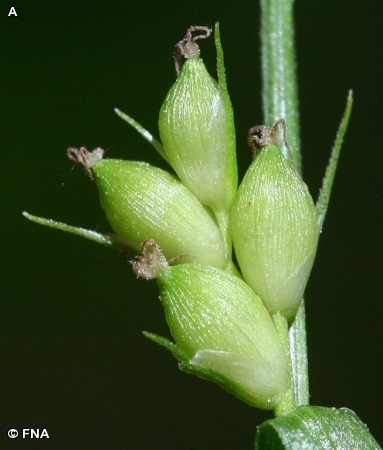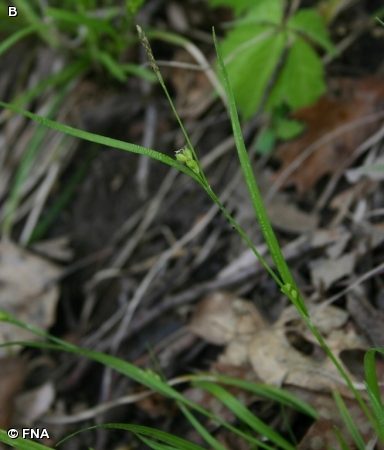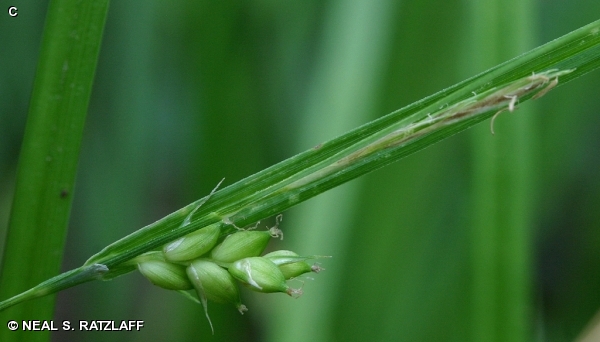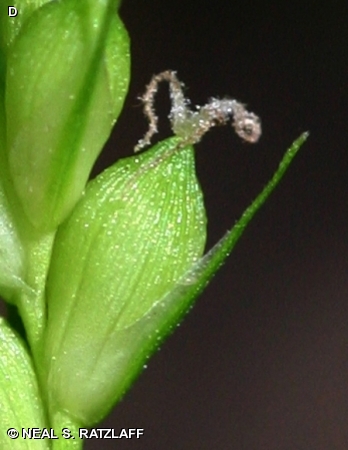
This perennial sedge grows in bunches. Narrow leaves up to 1/4 inch wide have smooth, hairless sheaths. Flowering stems from 6-24 inches tall bear a short-to-long-stalked male spike at the tip (B). Below are 2-4 erect female spikes with up to 12 perigynia arranged in 2 opposite ranks (A,C). Perigynia are tapered to a short, straight beak at the tip (D).
Moist upland woods. In Fontenelle Forest, Few-fruited Sedge is uncommon on Hawthorn and Cottonwood Trails. It is uncommon on Jonas and Neale Trails at Neale Woods. Look for it on Neale Trail just above the River Road entrance. Flowering occurs in early May with perigynia persisting into June.
Three other sedges with separate male and upright female spikes are common in our uplands. Gray Wood Sedge (Carex grisea) has female spikes, usually with more perigynia, that are spirally arranged rather than in two opposite ranks. Woodland Sedge (Carex blanda) has perigynia with curved beaks and more triangular, slightly winged stems. Hitchcock’s Sedge (Carex hitchcockiana) has rough hairs on the leaf sheaths and 2-7 more widely spaced perigynia with beaks bent to one side.
The content of NatureSearch is provided by dedicated volunteer Naturalists of Fontenelle Forest who strive to provide the most accurate information available. Contributors of the images retain their copyrights. The point of contact for this page is: Neal Ratzlaff.



